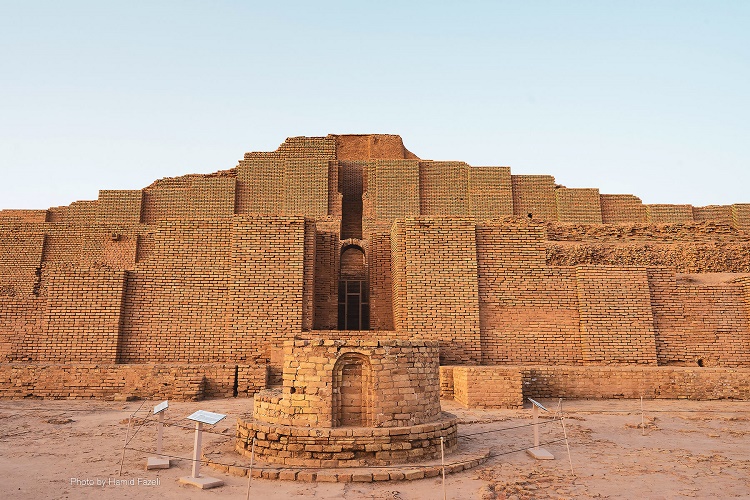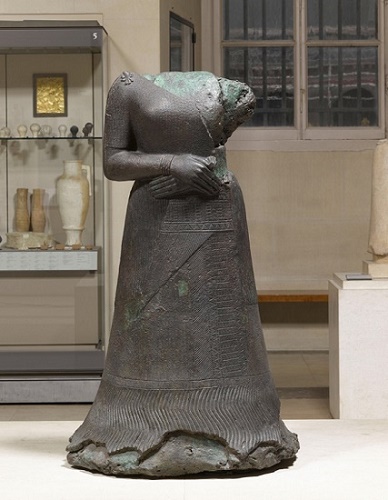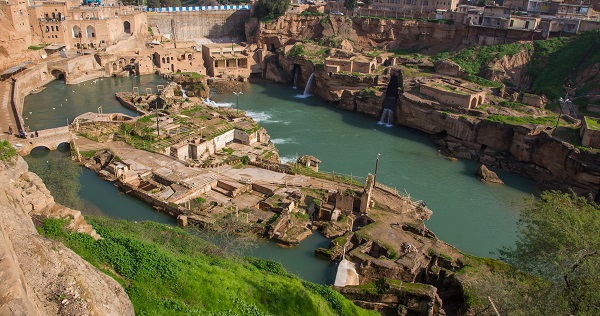
Ancient Chogha Zanbil Ziggurat (Ahvaz, Khuzestan, Iran)
To us, the ancient world is a world of mystery: a world filled with incredibly advanced structures, strange symbols, precious artifacts, and creepy rituals. One of these amazing structures is an over 5000-year-old ziggurat left from Elamite Empire: Chogha Zanbil (also known as Tchogha Zanbil and Ziggurat Dur Untash). As the largest ziggurat of the world outside Mesopotamia and the best-preserved of them, the ruins of the lost city of the Kingdom of Elam are now a UNESCO World Heritage and a top historical attraction in Khuzestan Province, Iran. Stay with me to discover the secrets of this sacred complex of the Elamites…
Contents
- 1 Why Visit Chogha Zanbil
- 2 The Elamite and their Mysterious Ziggurats
- 3 The Story of Chogha Zanbil Ziggurat
- 4 The Architecture of Chogha Zanbil Ziggurat
- 5 Ancient Technology in Chogha Zanbil
- 6 Ancient Artifacts Found in the Site – Chogha Zanbil
- 7 More About Chogha Zanbil Ziggurat
- 8 Like to visit Chogha Zanbil?
- 9 Chogha Zanbil Tours
- 10 ChoghaZanbil Ziggurat on Map
Why Visit Chogha Zanbil
- Chogha Zanbil is the world’s largest ziggurat outside Mesopotamia!
- It is also the best-preserved ziggurat in the world outside Mesopotamia.
- The ziggurat is the oldest religious place found in Iran.
- It is one of the best places to learn about Median Empire.
- Many precious relics were found on the Dur Untash Ziggurat site.

A top view of Chogha Zanbil Ziggurat
The Elamite and their Mysterious Ziggurats
In 1250 BC, an ancient civilization was born in the southwest of Iran: Elam. The power of this civilization shifted from one tribe to the other until King Shutruk-Nakhkunte turned the country into an empire around 3000 years ago. Centered in Susa (in present-day Khuzestan Province), the Elamite Empire established sacred places on high hills and mountain tops, and in sacred jungles and caves. We don’t know much about Elamite religious rituals, but we know that they believed in over 200 gods. With the belief that each city has a god to protect it, the Elamites built temples in the center of their cities. Some of these temples had the form of a Ziggurat: a huge structure in the form of a terraced pyramid used as a worship place. One of these great Ziggurats is Chogha Zanbil.

Tchogha Zanbil Reimagined – Chogha Zanbil Ziggurat
The Story of Chogha Zanbil Ziggurat
One of the most well-known kings of Elam, Untash-Napirisha, extended his construction projects from Susa to a land nearby. Dur-Untash, the city he founded there needed a temple. Untash-Napirisha knew that people worshiped different gods in different parts of Elam. To honor all of Elam and attract worshipers from anywhere around the empire, he dedicated the elegant temple he made, Ziggurat Dur Untash (1250 BC), to the most important gods of both the north and the south. The most notable of these gods were Napirisha and Insushinak (the Guard of Susa). They used brick and mudbrick in the construction of the temple. The outer casting included a row of bricks inscribed with dedication notes. A staircase that was hidden from the outside led to the top of the building and into a private shrine for the king and the queen.
When Untash-Napirisha died, the construction of the unfinished Chogha Zanbil was abandoned. Yet, it remained a sacred place that attracted pilgrims until 1000 BC. After the Assyrian conquest of Elam, king Ashurbanipal looted the place. The site was then erased from the memory of the world for over 2000 years until geologists accidentally rediscovered it in 1935. Because the unexcavated site looked like an upside-down basket, the name Chogha Zanbil became widely used for Ziggurat Dur Untash. Excavations began in 1946 and rose between 1951 and 1962. Only 3 stories of the 5-story structure remain today. On the site, they also found priceless artifacts that show the technological development of the Elamites. Chogha Zanbil then became the first Iranian site to be recognized as a UNESCO world heritage.

Chogha Zambil Facade – Chogha Zanbil Ziggurat
The Architecture of Chogha Zanbil Ziggurat
In 1240 BC, you could find Chogha Zanbil surrounded by 3 huge circular walls. The sacred complex included a royal quarter, residences, temples, and the grand Ziggurat. Located in the center, the Ziggurat was originally 53 meters high, was topped with a temple, and had a baked brick façade. Some of the bricks had cuneiform inscriptions on them. What distinguishes Ziggurat Dur Untash from other ziggurats in Mesopotamia is that in them, the upper floors were built on the lower floors. But in Tchogha Zanbil, each floor has its separate foundation on the ground. The central ritual section of the ziggurat had 7 portals and there were 7 sacrificial places in front of the southeastern staircase. To the northwest of the Ziggurat, you could find temples dedicated to minor gods. To the southeast, there are a collection of 3 monumental palaces known as the royal quarter. In one of these palaces, archaeologists found 5 underground tombs. In them, they found precious items and the remains of 4 cremated and 1 uncremated body.

The Ruins Beside Chogha Zanbil Ziggurat
Ancient Technology in Chogha Zanbil
One of the things that make Chogha Zanbil a work of ingenuity is its water transportation and purification system. To make the water that passed along the nearby river accessible for the citizens, Untash-Napirisha ordered the construction of a 45-kilometer channel from the river to the city. But the water that reached there was muddy and needed purification. So, they built a large reservoir outside and a pond inside Tchogha Zanbil. The pond and the reservoir were connected with small channels. The water that came from the river entered the reservoir, traveled through layers of sand, pebbles, and coal, and entered the pond clean and clear.

Tchogha Zanbil water system – Chogha Zanbil Photos
Ancient Artifacts Found in the Site – Chogha Zanbil
Of the many priceless relics found in Chogha Zanbil, the statue of Queen Napirasu (wife of king Unash) and Untash’s Stone Slab are the most treasured. Now kept in Louvre Museum, the human-size statue of Untash’s wife is still a mystery. The now headless figure is made of bronze with layers of gold and copper. Also kept in the Louvre, Untash’s Stone Slab is an at least 3500-year-old stone carving that depicts a woman that has the tail of a fish and holds 2 snakes in her hands. Figures of priests are also visible on top of the broken slab.

More About Chogha Zanbil Ziggurat
Visit Hours
9 a.m. to 7 p.m.
Visit Days
All days except for some public holidays
Finding Chogha Zanbil
This ancient site is about 40 kilometers to the east of Shush, Khuzestan Province. To get there, you should first travel to Ahvaz. You can get a ride from Ahvaz to Chogha Zanbil, but if you’d like to check out the charming attractions of Shush, you can find your way to the site from there.
The Best Season to Visit Chogha Zanbil:
Generally, Khuzestan is hot in the warmer seasons of the year. So, to visit Chogha Zanbil or any other site in Khuzestan Province, you’d better plan for early November to mid-March.
The Nearby Attractions
Not far from Chogha Zanbil, you can find relics left by Darius the Great: Apadana Palace (42 km), Shahoor Palace (42 km), and Shushtar Historical Hydraulic System (45km). You can also check out the historical collection of the Susa Museum in Shush (42km). The Islamic and Biblical prophet, Daniel, is also buried nearby at the Tomb of Daniel (42km).
Where to Eat Near Tchogha Zanbil
Chogha Zanbil Ecolodge
Mostofi Restaurant and Museum
Like to visit Chogha Zanbil?
Then book a seat on our Deep into the Heart of Persia Tour.
[/vc_column_text]
Chogha Zanbil Tours
ChoghaZanbil Ziggurat on Map
Keywords: ziggurat chogha zanbil, ziggurat of chogha zanbil, chogha zanbil architecture, choghazanbil ziggurat









